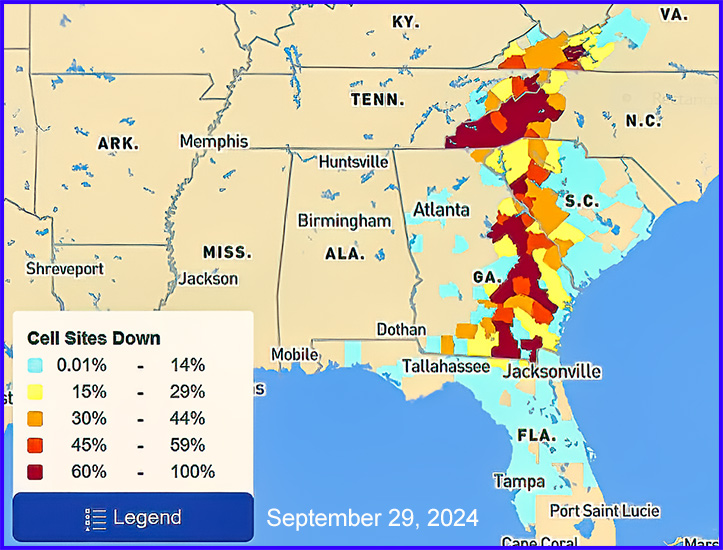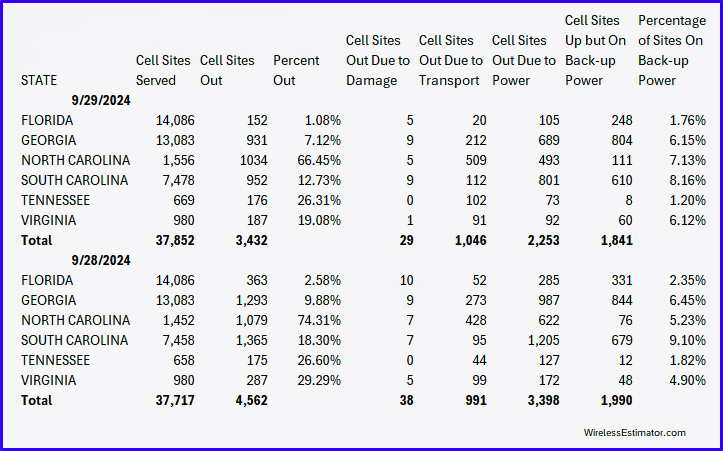
Hurricane Helene has severely disrupted cell phone communications across the affected regions, particularly in Western North Carolina. The storm caused widespread power outages, flooding, and infrastructure damage, which led to the shutdown of numerous cell towers and fiber optic lines. As a result, large portions of the region were left without any cell service, cutting off communication for many residents.

According to the FCC, 3,432 cell sites were down along the five-state path Helene carved after making landfall on September 26, 2024, at 11:10 p.m. EDT near Perry, Florida, in the Big Bend region.
The hurricane, a powerful Category 4 storm with winds up to 140 mph, caused significant destruction and flooding. Although this figure marked a decrease from the previous day’s record-setting 4,562 outages, it still represents the most extensive cell site failure ever recorded during a hurricane.
Florida fared better than other states, reporting 363 cell sites down as of September 28, 2024, accounting for only 2.58% of its 14,086 cell sites. In stark contrast, North Carolina experienced widespread devastation, with 74.31% of the cell sites in affected counties offline.
County-by-county cell site outages are available here.
Wireless Estimator, which has tracked outages for over two decades, confirmed that no hurricane has caused as much disruption to cell service as Helene. For comparison, Hurricane Dorian in 2019, which impacted four of the five states affected by Helene (excluding Tennessee), left 196 cell sites out of service. Similarly, in 2021, Hurricane Ida caused the loss of 1,051 cell sites in Louisiana, which accounted for 52% of the sites in affected parishes.
Despite the challenges posed by Hurricane Helene, extensive restoration efforts are underway to bring back cell service. Teams are working tirelessly, demonstrating a strong commitment to restoring communication.
However, the task is not without its difficulties. Flooding and treacherous conditions, particularly in North Carolina and Tennessee, have slowed down the process.
Fuel resupply has been delayed, as many small bridges have been destroyed or washed away, making access to critical areas even more difficult.
















